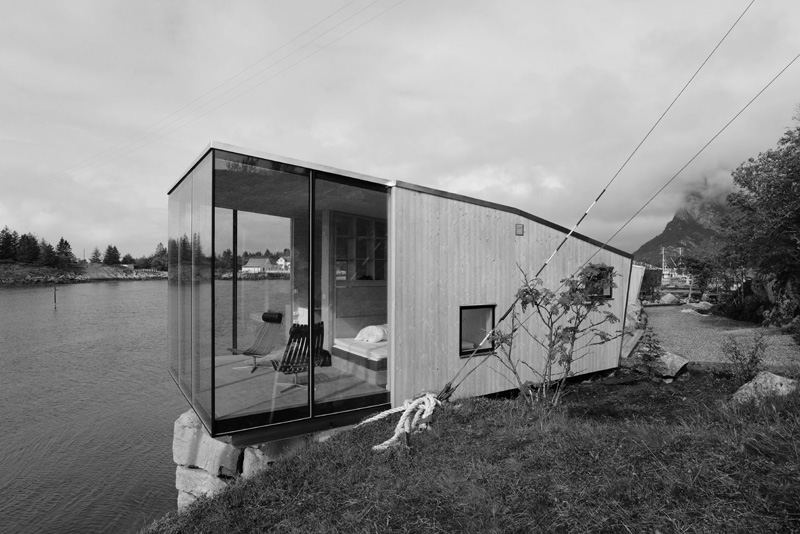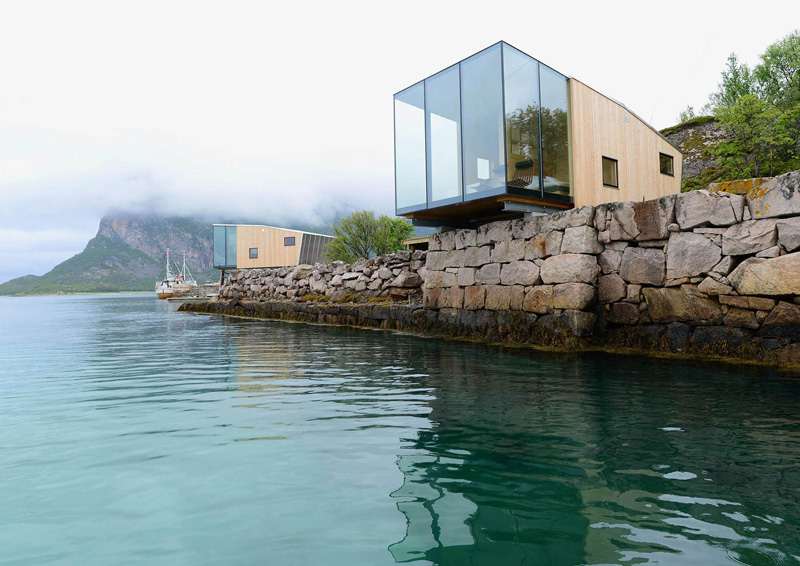Stinessen Arkitektur have designed a group of huts as part of the Manshausen Island Resort, that specializes in adventure and exploration off the coast of Northern Norway.
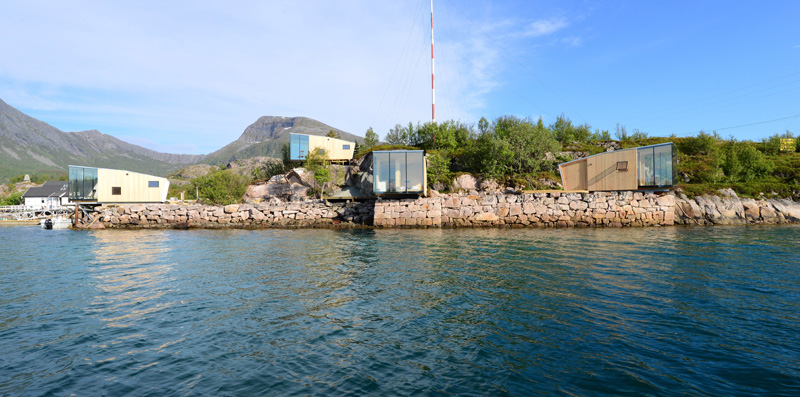
The designer’s description
Manshausen Island is situated in the Steigen Archipelago off the coast of Northern Norway. The Island´s position between dramatic mountains and the Barents Sea is in itself the inspiration for celebrated Polar Explorer Børge Ousland´s newest adventure; an adventure and exploration resort. The resort was planned and laid out in consideration of the Island´s topography and the two main existing structures – the old farmhouse and the stone quays.
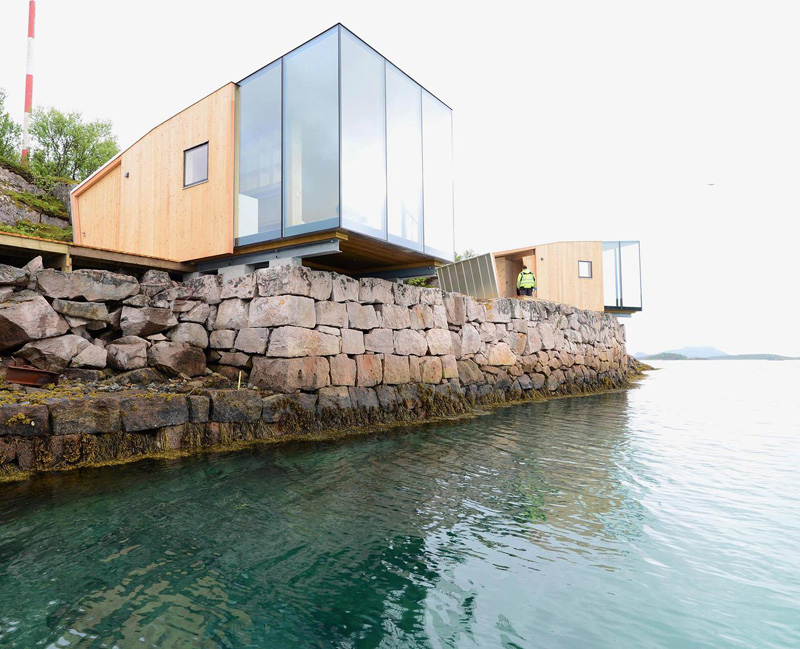
The interior gives room to a professional kitchen and dining area on the ground floor and a relaxing library on the first floor. The cabins are all but one placed on the stone quays, partially cantilevered above the sea, one placed on a natural shelf on the rocky formations above . The positioning and orientation of all the cabins is based on the consideration of their individual panoramic views and privacy for the guests.
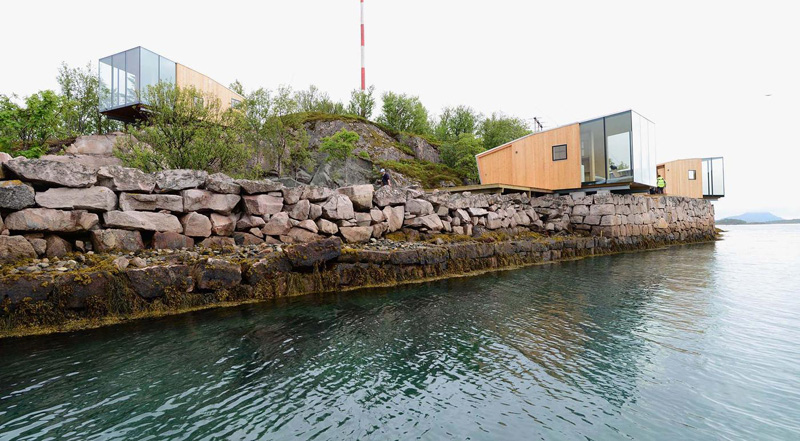
The shelter design endeavors to make a minimum environmental impact with the use of massive wood construction and the construction was planned taking into account the logistical restrictions of building on a remote island and the weather conditions dictating a limited period for construction works.
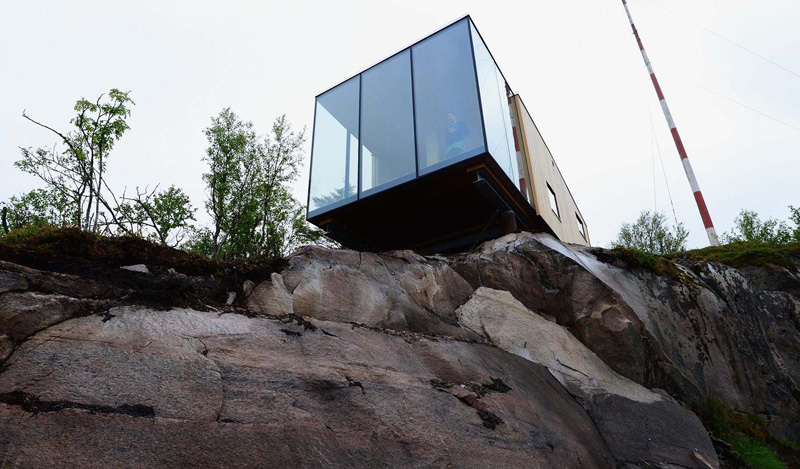
The massive-wood construction is made in two layers, with the outer layer in larch which in time will turn naturally silver gray. The glazing is custom made for the project and the large glasses are glued to the outside of the construction to ensure a smooth surface towards the winds (that may be severe at times) and to allow for unobstructed views of the nature and the elements outside.
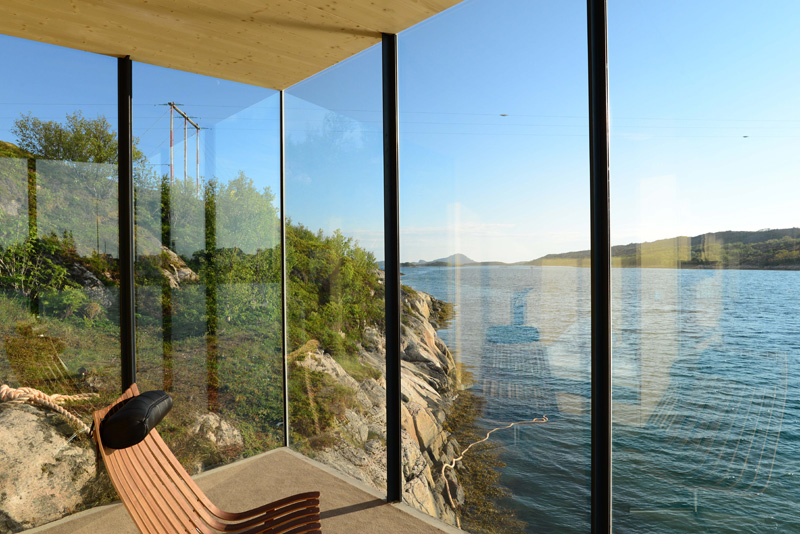
All details, also in the interior, are carefully planned and custom made for the project, but always with attention to the main conceptual idea. The cabins are designed to offer their guests shelter and comfort while at the same time underlining the dramatic experience of the elements outside; the sea, landscape, changing lights, weather and different seasons. Above all the cabins endeavor to fulfill the functional requirements of the guests, with ample space for luggage and clothing/equipment, a comfortable bathroom and a kitchen/dining area.
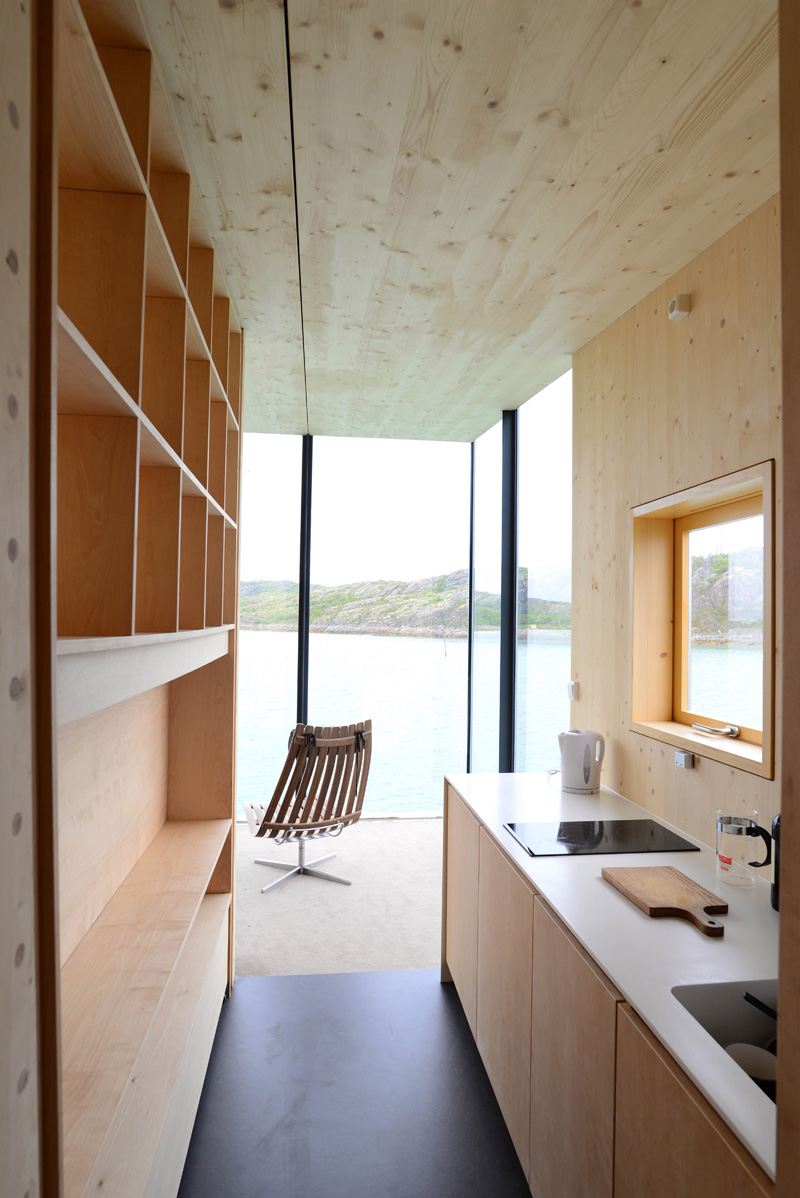
The cabins accommodate two to four people, or a family of five. The main bed is positioned in the main room, slightly withdrawn from the floor to ceiling glasses, to enable the visitor an around the clock experience of the outside elements, while still being comfortably sheltered.
